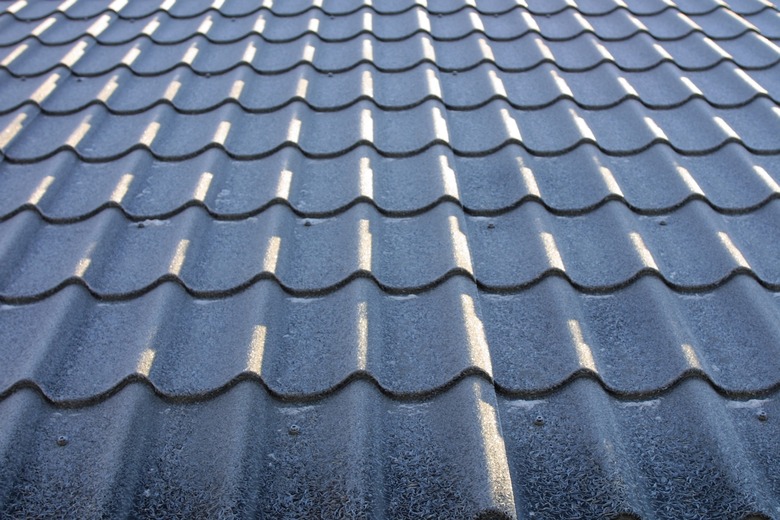Do You Need Plywood Under Metal Roofing?
Although it may seem counterintuitive, metal roofing can be attached directly to your building's roofing structure without the need and expense of plywood sheeting. As long as the interior of your roof is protected from moisture accumulation, underlayment is not required, though homeowners planning to insulate their house heavily may choose to install plywood to protect their investment.
Fastening to Purlins
Fastening to Purlins
For many applications, a layer of plywood underneath your metal roofing is an unnecessary expense. Metal roofing panels rated for "architectural use" attached to purlins (horizontal pieces of wood or metal fastened to roofing trusses) are structurally sound when installed according to your roofing manufacturer's instructions and local building codes. The spacing of your purlins depends on the expected snow and wind load. In most parts of the United States, spacing is no greater than 24 inches on center, though your roofing contractor or building engineer can help you determine proper spacing distance for your location. Boards measuring 1 inches by 4 inches or 2 inches by 4 inches are commonly used for purlins, though never use treated lumber because it will corrode the steel roof and fasteners.
Preventing Condensation
Preventing Condensation
In a barn, shop or other outbuilding, you can attach your metal roof directly to the purlins. In a residential application, however, condensation is a concern. Moisture can collect on the inside of your metal roof whenever warm, moist air inside your building meets the cold metal of your roof. This condensation can collect and drip onto interior drywall or home furnishings. If you choose to omit the plywood from a residential construction, install a vapor barrier between the purlins and the metal roof, or plan to spray closed-cell foam insulation between the rafters to eliminate the temperature differential between the air in the building and the metal.
Considering When to Use Plywood
Considering When to Use Plywood
While metal roofing doesn't require plywood underlayment, there are circumstances in which you may wish to install plywood to anticipate future roofing needs or to offer additional soundproofing. Modern metal roofs are expected to last 30 years or longer. When the metal is eventually replaced, roofs without plywood underlayment require the insulation to be replaced or repaired because it is attached to the metal. Planning for repairs three decades away may seem imprudent, but the cost of plywood today likely is much less than the cost and hassle of re-insulating down the road. A layer of plywood also offers an additional layer of soundproofing from rain landing on the roof, though the air pocket between the roof and the interior drywall plays a larger part in keeping noise down. When using plywood, nail it directly to the purlins, and screw the metal roofing panels through the plywood into the purlins as instructed by the manufacturer. In this installation, the vapor barrier is installed on the side of the insulation nearest the interior of the building.
